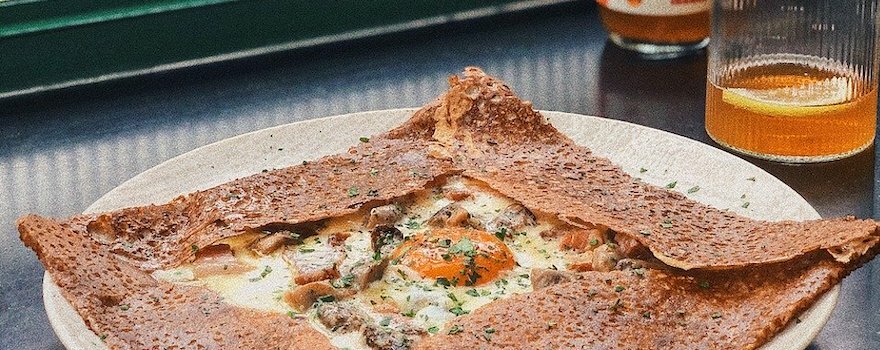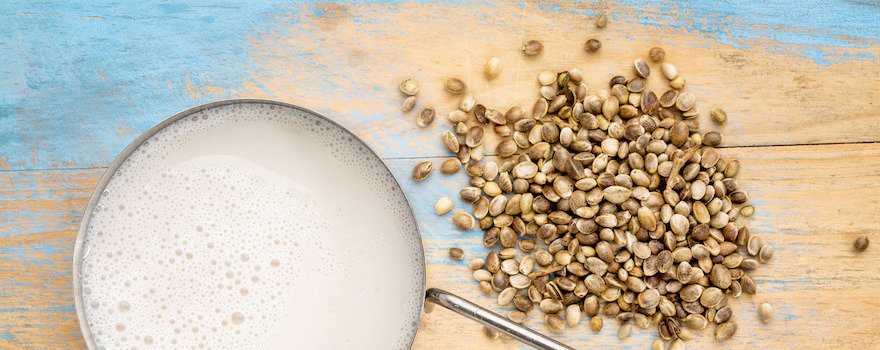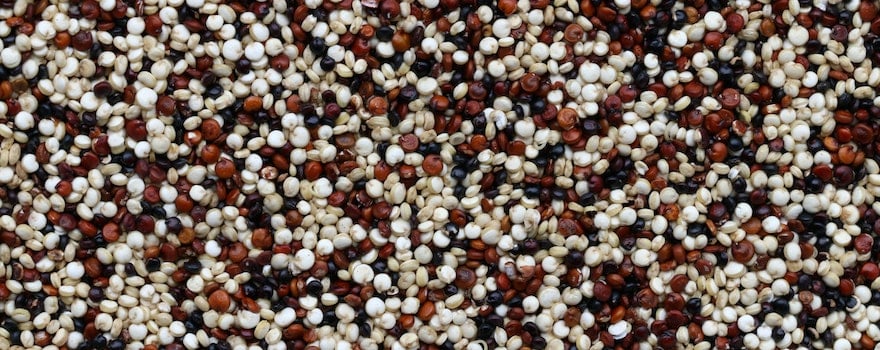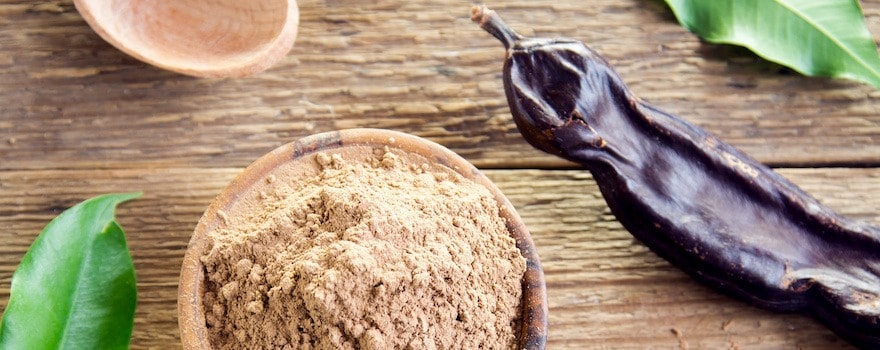9 gluten-free flours, valuable alternatives in the kitchen
Some people suffer from conditions directly related to gluten consumption such as celiac disease and must avoid ingesting it for their health. Others are drawn to promises, not always scientifically supported, of weight loss or well-being.
A gluten-free flour? There are at least nine; here is our selection, for making gluten-free bread, for example. We also give you some recipe ideas to learn how to master these sometimes unfamiliar powders. We recommend organic flours.
People with celiac disease should always check for the absence of gluten traces on flour packaging. These may be milled in facilities that use gluten-containing grains. See after the list for an explanation of gluten and the conditions it can cause.
Rice flour

This is an excellent gluten-free flour! Rice flour is widely used in Asian cuisine; it is used to make vermicelli and noodles. Its taste is relatively neutral and it is a staple flour to have in your pantry when you are gluten intolerant! You can combine it with more flavorful flours for a stronger taste. In its whole version it will be richer in fiber, minerals and trace elements.
Recipe ideas : to make the soft Asian coconut balls you’ll use glutinous rice flour; they can be filled with a mixture of roasted peanuts and sesame. Its sandy texture when baked is perfectly suited to shortbread or crumble recipes. It can also be used as a binder in sauces such as béchamel.
Buckwheat flour (sarrasin)

Its name can be misleading: buckwheat (blé noir or sarrasin) does not belong to the wheat family but to the sorrel family! Its flour is a staple ingredient of Breton cuisine. It is rich in plant proteins and in magnesium. This study carried out on animals suggests its prebiotic effect. Its taste is similar to that of hazelnut and its color is brown.
Recipe ideas: with this flour you can make the classic buckwheat pancakes! For that, mix it with water, butter, an egg and a pinch of salt. For toppings you can let your imagination run wild. Homemade ratatouille, leek fondue and smoked trout are healthy and tasty options. You can also incorporate this flour into cakes and pancakes.
Corn flour

Corn flour is emblematic of South American cuisine. It can give dishes a golden color and transport you for the duration of a meal! Its taste is fairly neutral. It is rich in B vitamins and in minerals such as phosphorus. This gluten-free flour has enjoyed great success since the late 19th century through the Maïzena brand.
Recipe ideas : with this flour we make arepas. They are delicious flatbreads that are very simple to make since you only need to hydrate the flour with water. You can top them with homemade guacamole, red onion, tomatoes and diced chicken marinated in cilantro and paprika. A guaranteed change of scenery! You can also make breads, cakes, creams with a plant-based milk, vanilla bean and cinnamon.
Chestnut flour

A delicious gluten-free flour. A brief stop on the Isle of Beauty, chestnut flour is indeed widely used in traditional Corsican cuisine. This tree nut carpets the floor of some of our forests in autumn. It is rich in fiber, slow-release carbohydrates, vitamins and minerals.
Recipe ideas : its robust yet delicate taste pairs very well with cocoa in a marble cake. With pear it will also create gentle combinations. It is also suitable for savory recipes; it will add sweetness thanks to its sweet flavor, for example in a creamy squash soup or in gnocchi.
Chickpea flour

The chickpea is a legume native to the Near East. Its flour is widely used in Indian cuisine. Gluten-free, it is a good source of manganese, copper and folate. Its taste is mild and sweet. Chickpeas are also a source of plant-based protein.
Recipe ideas : you can discover the exotic recipe for the galettes “besan puda”. You can make them with yogurt, bell pepper, onion, turmeric and cumin. Or, taking a detour through Italy, try the recipe for the “farinata”, a very simple tart to prepare using this flour, water, oil and seasonings. It can also be used to make pastries such as an orange-scented fondant.
Hemp flour

Often confused with cannabis, hemp is actually very low in THC, the psychoactive substance present in large quantities in the latter. The seeds of this plant are very interesting nutritionally: very high in protein, fiber and omegas. Its green color and slightly caramelized flavor will add originality to our recipes! All that’s left is to take the plunge.
Recipe ideas : this flour adds tenderness to cakes; you can make scones, those small indulgent cakes that are enjoyed at tea time. You can also use it to shape a colored shortcrust pastry, small cream puffs filled with salmon mousse, perfect for impressing guests at a cocktail party!
Quinoa flour

A plant native to the Andes, quinoa or “rice of the Incas” has remarkable nutritional qualities such as a high content of protein, iron and so-called essential amino acids. Its flour has a slightly bitter flavor with nutty notes.
Recipe ideas : this flour is used in many recipes such as crepes, cakes, it can be used to thicken sauces or soups. It pairs very well with almond powder in a carrot cake with dried fruits, for example. In a savory version, you can make vegetable patties.
Cassava flour

A good gluten-free flour alternative. cassava is a shrub native to the Amazon region whose root is mainly consumed. Very rich in carbohydrates, mainly starch, it has a good content of magnesium and potassium. Nutty notes characterize this flour which is a bit sweet.
Recipe ideas : the avocado féroce is a Caribbean recipe made with this flour, avocado, salt cod and spices to enhance the preparation! Another exotic suggestion? The Ecuadorian pan de yuka is made with this powder, cheese, butter and eggs, a little milk and yeast. It is also suitable for more classic sweet recipes such as a mango and lime cake.
Carob flour

This flour is obtained by grinding whole pods of carob, a tree of the legume family. It’s a concentrate of nutritional benefits! Fiber, vitamins A and E, it fits perfectly into healthy, nutritious cooking. Its flavor and color recall the cocoa.
Also read the Carob flour, for healthy and nutritious cooking
Recipe ideas: a top-choice substitute for cocoa in sweet recipes. It is perfectly suited to pastry recipes but also has the advantage of blending into drinks like a milkshake or a hot beverage with plant-based milk. It would be excellent in a chestnut cream entremet, and why not incorporate it into a mashed potato and sweet potato puree?
Gluten, a viscous paste omnipresent in the food landscape
Originally, a natural gluten composed of plant proteins
Gluten is made up of several plant proteins that are found in the energy reserve of the grains of certain cereals, including wheat and its variants such as spelt, barley, rye and oats.
These proteins, whose prolamins and glutenins are the main components, are insoluble in water. When they are hydrated and kneaded for use in culinary preparations, the famous gluten forms! In Latin, the term “gluten” means glue. As its name indicates, its texture is viscous and elastic.

For those with intolerances, allergies, and sensitivities to gluten, tracking down this substance can be a real headache! It is found in foods containing the cereals mentioned above such as bulgur, pasta and even in regular beer made from barley malt.
But it also hides in unsuspected foods: in powdered sugar, certain candies and cured meats! In these cases it’s referred to as “industrial” gluten, used as a texturing agent to give elasticity and cohesion to preparations.
The three main conditions related to gluten ingestion
Celiac disease
The term celiac derives from the Latin coeliacus, which refers to the intestine. It is a chronic intestinal disease. The smallest amount of ingested gluten will trigger an immune system reaction that will raise the alarm! Reacting as if facing a dangerous invader such as a virus, the body will mount a full defense system. This will damage the wall of the small intestine, which is lined with thousands of tiny folds.
The result is digestive disorders such as chronic diarrhea, or non-digestive issues like poor absorption of nutrients such as iron or calcium. Affected individuals must give up gluten or risk developing complications.
Allergy to wheat proteins
Wheat food allergy is an immune system response to proteins present in wheat such as gliadin (wheat prolamin) or glutenin that make up gluten. The immune system will treat them as dangerous enemies to neutralize! Itchy eyes, runny nose, red patches or breathing difficulties are examples of common symptoms.
The presence of wheat and cereals containing gluten must now be indicated on food labels.
Non-celiac wheat sensitivity
This type of sensitivity gives scientists plenty to work on as they continue to try to understand its mysterious mechanisms. Its symptoms can be similar to those of the conditions mentioned above.
Often self-diagnosed, this study showed that 30% of patients who thought they had this type of sensitivity actually had a different condition, such as gut bacteria or lactose intolerance.
Toward a better understanding of gluten digestibility
An investigation by Cash Investigation explained that in the 1980s scientists reportedly developed varieties of wheat with larger proteins to increase yields and boost profits.
The French project “gluten: myth or reality”, conducted in collaboration with the National Institute for Agronomic Research, is currently working on the subject. It aims to shed light on potential factors behind hypersensitivity related to wheat selection, cultivation, and processing. Stay tuned!
Gluten-free diets without a medical reason: what potential effects?
Going gluten-free without a medical reason may have consequences. This study found an increased risk of developing cardiovascular disease, because the ‘no-gluten’ diet deprives the body of whole grains and their protective effects.
60 Million Consumers scrutinized several processed gluten-free products and reached the surprising conclusion that they often contained less protein and fiber, but also more fats and sugars than their conventional equivalents. So be careful not to be fooled!
Another harm — financial this time — instead of making you lose weight as some claim, by consuming processed gluten-free products, it’s your wallet that may slim down! It is recommended to prepare your own gluten-free recipes whenever possible to control their composition.
Note: If a condition related to gluten consumption is suspected, consult a physician who can, if necessary, refer you to an allergist or a gastroenterologist.



